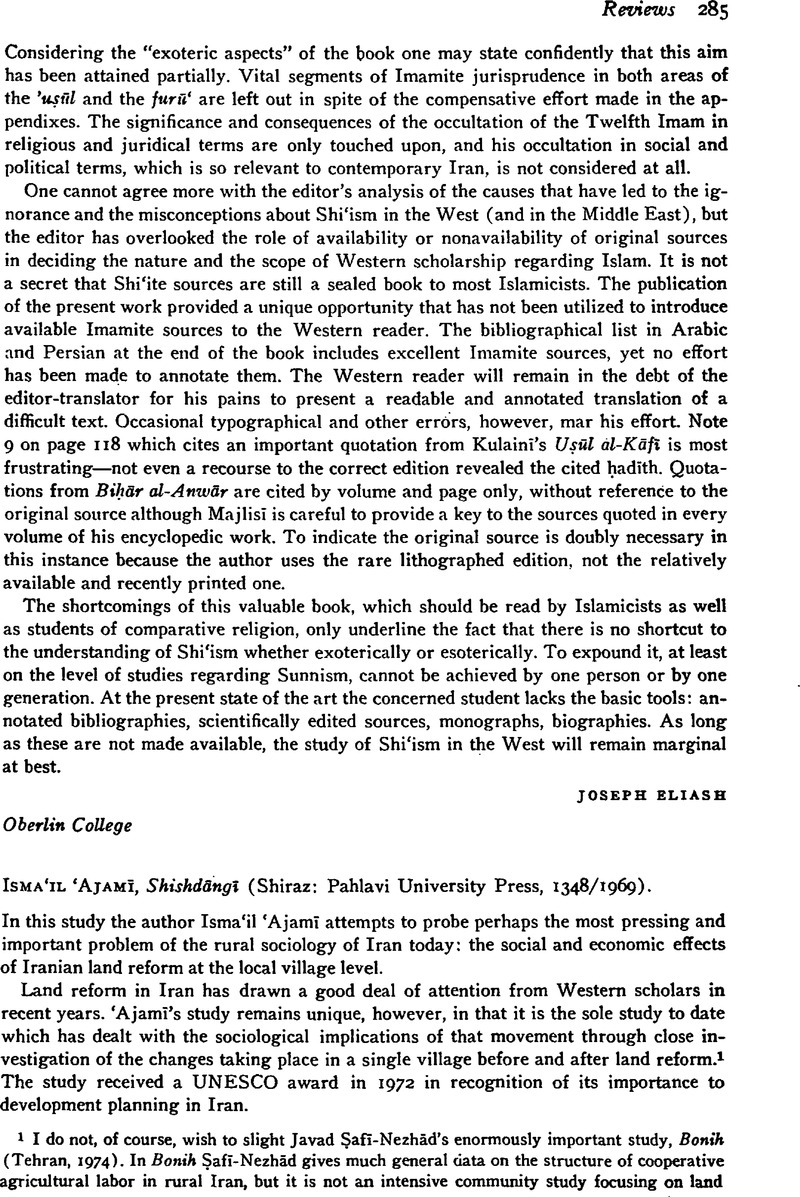No CrossRef data available.
Published online by Cambridge University Press: 29 January 2009

1 I do not, of course, wish to slight Javad Safī-Nezhād's enormously important study, Bonih (Tehran, 1974).Google Scholar In Bonih Safī-Nezhād gives much general data on the structure of cooperative agricultural labor in rural Iran, but it is not an intensive community study focusing on land reform. His earlier study Tāleb-Abād (Tehran, 1345/1966)Google Scholar still remains the best available account of a pre-land reform Iranian village economy.
2 This is an infelicitous translation of the Persian mikanisih. Although the word translates as “mechanized”, in point of fact landlords who paid peasants a daily wage rather than providing usufruct rights were able to claim “mechanized” status for their land, and thus remove that land from the roles for distribution to peasants under the third land reform law.
3 Some tulumbih-kārān and peasant-proprietors also maintain small stores, but are thought of as deriving their primary income from the land, a common pattern in rural Iran.